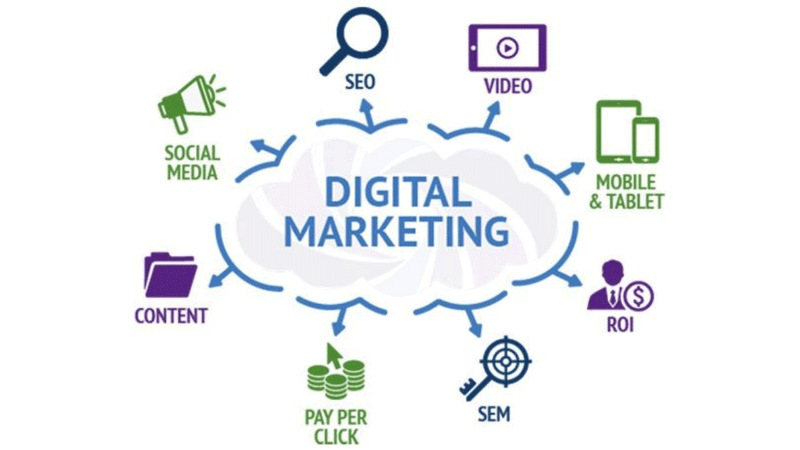Enhance Customer Experience and Drive Website Traffic With Responsive Website Design
In today's electronic landscape, where customers are accessing web sites from a wide range of devices, responsive website design has become more crucial than ever before. With its capability to adjust and perfectly readjust to different display dimensions, responsive style not only boosts individual experience yet additionally drives traffic to your internet site. Why is this style technique so critical? Just how does it improve customer engagement and boost website traffic? In this discussion, we will certainly explore the crucial elements of reliable receptive layout, explore the most effective practices for its implementation, and discover the keys to enhancing user experience while driving even more traffic to your site.
Why Responsive Internet Design Matters
Responsive website design is a crucial element of modern internet development because of its ability to make certain optimal individual experience across numerous gadgets and display sizes. With the expansion of smart devices, tablets, and other mobile devices, it has ended up being critical for sites to adapt and provide smooth performance despite the gadget being used.
The main reason that receptive internet layout matters is that it allows individuals to have a delightful and consistent searching experience, no matter the device they are using. A responsive web site automatically readjusts its design, design, and web content components to fit the screen dimension and resolution of the device, making certain that individuals can quickly browse and engage with the site without any type of hassle or aggravation.
Moreover, responsive internet design additionally plays a substantial role in search engine optimization (SEO) Internet search engine, such as Google, prioritize web sites that are mobile-friendly and receptive in their search results page. By incorporating receptive layout concepts, web sites can enhance their presence and position, resulting in increased natural traffic and prospective consumers.

Boosting Customer Interaction With Responsive Design
Enhancing customer interaction is an essential objective of receptive style, as it ensures that users can easily gain access to and connect with internet site content on any gadget. With the increasing use tablets and smart devices, it is essential for web sites to adjust to different screen sizes and resolutions. Responsive layout makes it possible for websites to immediately adjust their design and web content to give a seamless individual experience throughout tools.
One of the major ways responsive layout increases customer involvement is by reducing load times. With a receptive website, users do not have to wait for different mobile versions to lots, leading to quicker access to content. This enhanced rate causes higher individual satisfaction and encourages them to invest even more time on the website.
Additionally, receptive layout improves individual engagement by enhancing navigation and user interface (The Ad Firm digital marketing). When a web site is designed responsively, menus and buttons are optimized for touch interactions, making it much easier for users to browse and engage with the website on their mobile gadgets. This instinctive and user-friendly experience maintains users engaged and motivates them to discover more of the internet site
In addition, receptive layout enables far better web content visibility and readability. By adapting the format and typeface dimensions to various devices, responsive sites make sure that customers can conveniently recognize the web content and review. This improves individual engagement by lowering the demand for scrolling or zooming to read the text.
Boosting Internet Site Web Traffic With Responsive Website Design
With the growing popularity of smart phones, having a web site that is receptive to various screen dimensions and resolutions is vital for driving increased web traffic. In today's electronic landscape, individuals are accessing internet sites from a variety of tools such as smart devices, tablet computers, and computer. Each of these tools has various display dimensions and resolutions, and if your internet site is not made to adapt to these variations, it can lead to a bad user experience and a loss of prospective website traffic.
Receptive website design makes certain that your site looks and functions efficiently throughout all devices. By utilizing flexible grids, liquid photos, and media queries, receptive style enables your internet site to instantly change its layout, material, and navigating to fit any screen dimension. This indicates that users will have a smooth browsing experience regardless of whether they are utilizing a big desktop computer or a small mobile phone computer.
Crucial Element of Effective Receptive Layout
Efficient responsive design incorporates a number of crucial elements that ensure a smooth user experience across different tools. One of these aspects is adaptable grids and formats. By utilizing loved one devices like portions rather than dealt with systems like pixels, designers can develop formats that adapt and scale to fit various display dimensions. find more info This permits content to be shown in a visually appealing and understandable fashion on any device.
An additional vital aspect is media inquiries. These enable designers to apply different designs and layouts based upon the characteristics of the customer's gadget, such as display dimension and alignment. By utilizing media queries, developers can maximize the presentation of material for each tool, making certain that it is easily available and legible.
Receptive images are also vital in reliable receptive design. Images that are also big can reduce down page lots times on smart phones, while photos that are also little might show up pixelated on larger displays. By utilizing techniques such as receptive picture resizing and careless loading, designers can guarantee that images are properly sized and optimized for every tool.
Last but not least, efficient responsive design involves a mobile-first technique. This indicates developing and prioritizing web content for mobile devices first, and then improving the style and expanding for bigger displays. This technique guarantees that the most essential content is quickly accessible on smaller sized screens, while still offering an abundant experience on larger devices.
Best Practices for Executing Receptive Website Design
Applying responsive web style needs careful factor to consider of various best practices to make certain an ideal customer experience throughout various gadgets. When applying responsive internet design., below are some essential finest practices to adhere to.
To start with, it is critical to prioritize mobile customers. With the raising dominance of smart phones, developing for mobile-first has actually become important. Beginning by developing for smaller sized displays and afterwards progressively boost the format for bigger displays.

One more vital ideal practice is to enhance pictures for various screen resolutions. Large pictures can slow down the loading time of your website, Bonuses particularly on mobile phones with slower links. Usage responsive images that can be resized based on the device's display resolution to boost performance.
In addition, test your website on various tools and display sizes to make certain a constant and seamless experience. There are numerous testing devices available that can assist you determine any kind of problems and make necessary changes.
Last but not least, prioritize use and access. Make sure that your web site is simple to browse, with succinct and clear web content. Make sure that your web site comes to individuals with handicaps and complies with accessibility standards.
Final Thought
In verdict, receptive web style plays an important role in boosting customer experience and driving web traffic to websites. By adopting receptive layout concepts, web sites can ensure ideal checking out experiences throughout various devices, resulting in increased user engagement (Web Design). Moreover, responsive style can additionally add to higher web site traffic as it useful reference enhances internet search engine rankings and facilitates very easy sharing of material. For that reason, companies should concentrate on carrying out the crucial elements and best practices of receptive design to efficiently satisfy the demands of contemporary individuals.
Maximizing user engagement is a key goal of responsive layout, as it guarantees that individuals can easily accessibility and communicate with site material on any kind of tool. Receptive design enables websites to instantly change their format and web content to supply a seamless customer experience throughout gadgets.
Additionally, receptive design boosts customer interaction by improving navigation and customer interface.Receptive images are additionally crucial in efficient receptive style. By taking on responsive style concepts, web sites can ensure ideal checking out experiences throughout various devices, leading to enhanced individual interaction.